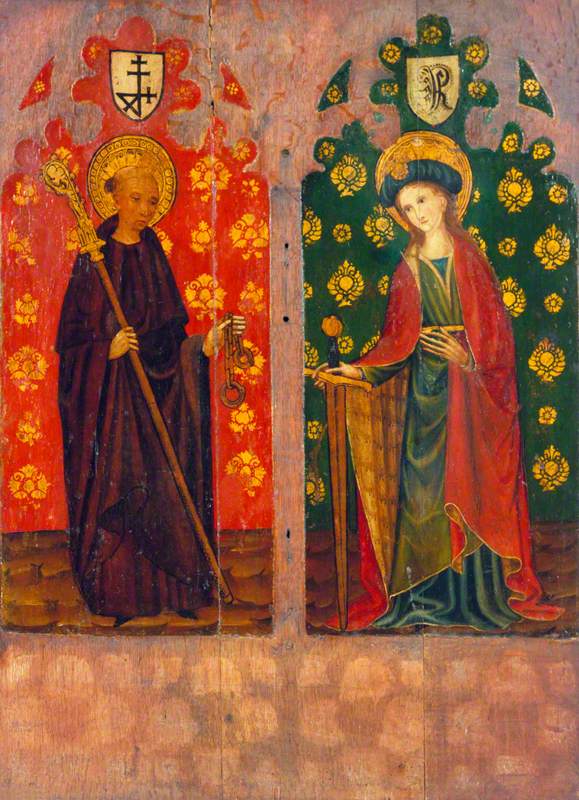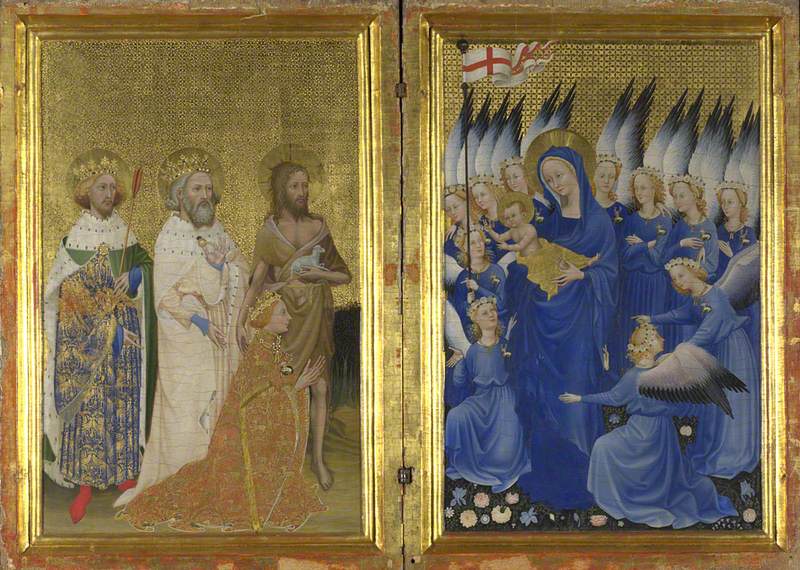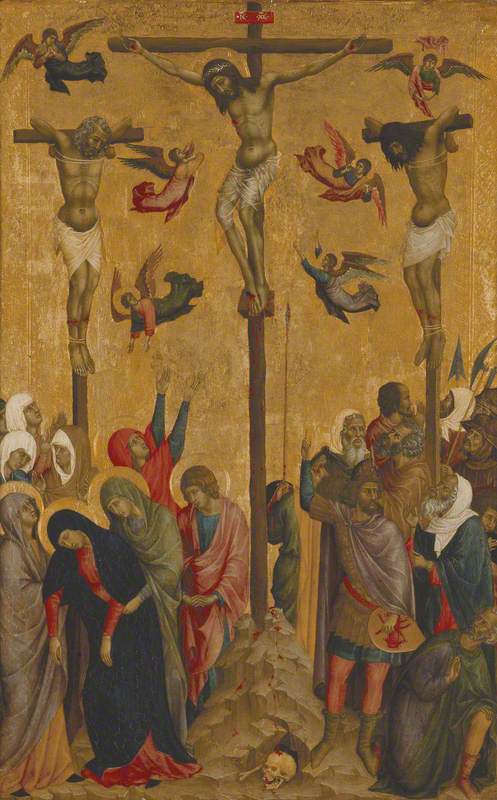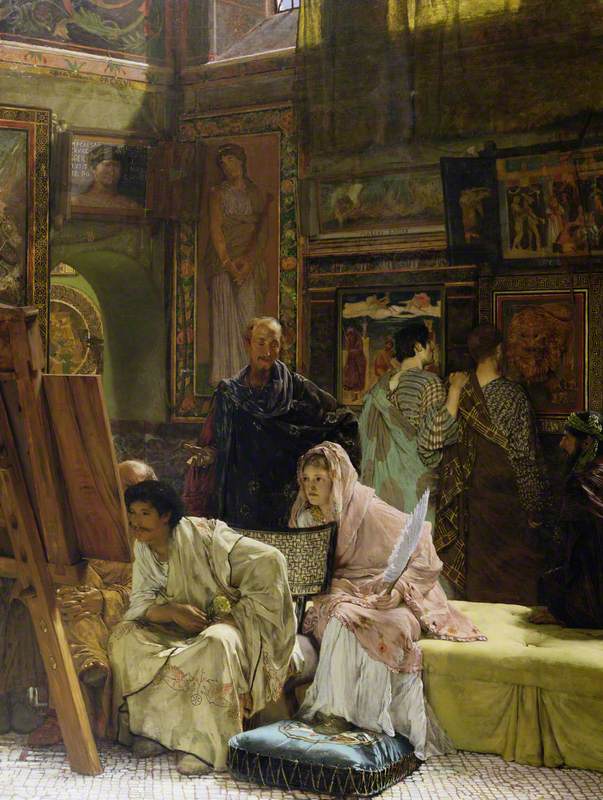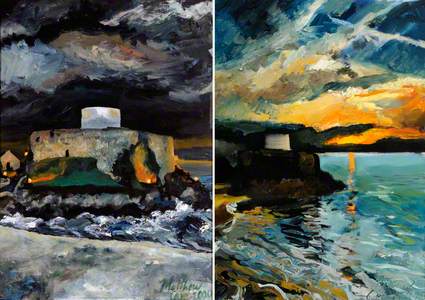Although many oil paintings are on canvas, some artists – particularly those before the Renaissance – have used a range of other surfaces for their works. Here's a quick guide to some of the terms and materials used on Art UK to describe them.
Copper
Copper sheets (sometimes called copper panels) provide a very hard, smooth surface, ideal for small detailed paintings, usually for domestic consumption.
Its popularity for paintings ran alongside its availability for engraving plates, and some paintings use old printing plates. Other metals such as silver, tin and zinc have also been used.
Fresco
Fresco is a technique rather than a material, but was the medium of some of the greatest paintings in western European art history.
Fresco means ‘fresh’ in Italian and involves painting with tempera on fresh wet plaster. As the plaster and paint dry together they bind into a long-lasting surface (experiments with painting in fresco in the damper climate of northern Europe met with failure).
Wood (often called Panel)
Most surviving paintings before the early sixteenth century are on wooden panel, as can clearly be seen
In northern Europe oak is the wood most commonly used; in Italy it is
Diptych and Triptych
A diptych is a painting in two parts (from the Greek for 'two' and 'fold'). Most commonly these will have been small religious paintings or altarpieces for private use. They are usually hinged and fold like a book. The outer surfaces may also be painted. One of the most famous examples in the UK is the Wilton Diptych in The National Gallery.
In a church setting a multi-section altarpiece is more likely to be a triptych, in three sections. The two outer sections – the 'wings' or 'shutters' – are hinged to close and cover the central panel. Normally the wings would be closed and only opened on feast days or special celebrations.
The Deposition from the Cross
1518/1519
Joos van Cleve (c.1485–1540 or 1541) 
More complex altarpieces are known as polyptychs ('many folds') and usually have a series of smaller paintings along the base – the 'predella'. Over the centuries many of these complex structures haven been dismembered and the parts found separately scattered among museums and collections worldwide.
Some modern artists have adopted the formats to make multi-part works, like Francis Bacon’s Three Studies for Figures at the Base of a Crucifixion and Matthew Cave’s Fort Grey Sunsets: Diptych 1.
Andrew Greg, National Inventory Research Project, University of Glasgow
You can read more in the Art UK list of art terms.


